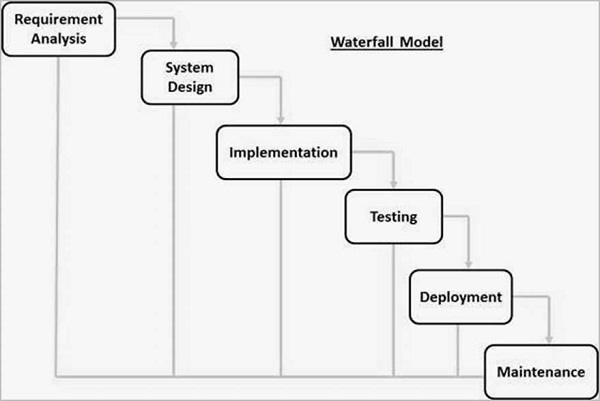SDLC - Software Development Life Cycle
SDLC - Software Development Life Cycle is a process used by the software industry to design, develop and test high quality softwares.
1- Requirement Analysis
2- Defining Requirements
3- Designing the Product Architecture
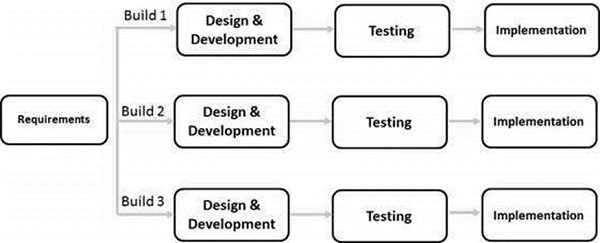
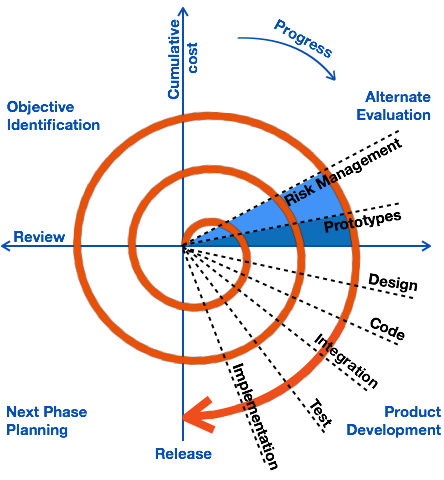
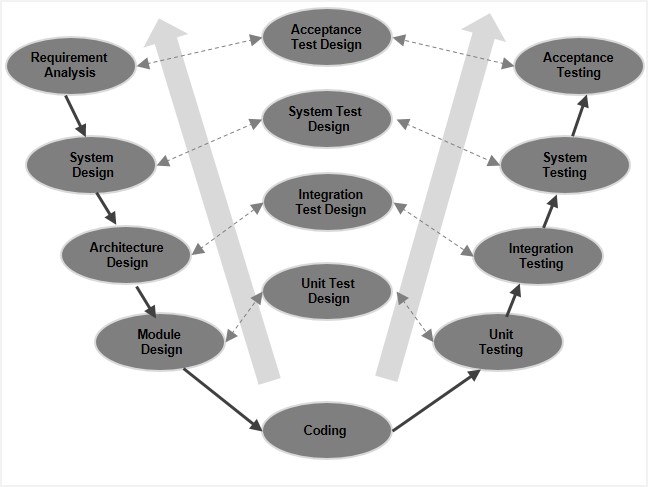
1- Requirement Analysis
2- Defining Requirements
- To clearly define and document the product requirements
- SRS (Software Requirement Specification) document which consists of all the product requirements to be designed and developed during the project life cycle.
3- Designing the Product Architecture
- One design approach for the product architecture is proposed and documented in a DDS - Design Document Specification.
- DDS is reviewed by all the important stakeholders and based on various parameters as risk assessment, product robustness, design modularity, budget and time constraints, the best design approach is selected for the product.
- DDS defines all the architectural modules of the product along with its communication and data flow representation with the external and third party modules.
4- Developing the Product
5- Testing the Product
- Use modern SDLC models
- The testing only stage of the product where product defects are reported, tracked, fixed and retested, until the product reaches the quality standards defined in the SRS.
6- Deployment in the Market and Maintenance
- UAT - User Acceptance Testing , The product may first be released in a limited segment and tested in the real business environment
SDLC Models
1-Waterfall Model
- each phase must be completed before the next phase can begin and there is no overlapping in the phases,
- A linear sequential flow means that any phase in the development process begins only if the previous phase is complete,
- phases do not overlap
Implementation phase: the system is first developed in small programs called units, which are integrated in the next phase. Each unit is developed and tested for its functionality, which is referred to as Unit Testing.
Functional Requirement :
Non-Functional Requirement :
The use of Waterfall model is most appropriate are;
- Requirements are very well documented, clear and fixed.
- Product definition is stable.
- Technology is understood and is not dynamic.
- There are no ambiguous requirements.
- Ample resources with required expertise are available to support the product.
- The project is short.
The major advantages of the Waterfall Model are as follows are;
- Simple and easy to understand and use
- Easy to manage due to the rigidity of the model. Each phase has specific deliverables and a review process.
- Phases are processed and completed one at a time.
- Works well for smaller projects where requirements are very well understood.
- Clearly defined stages.
- Well understood milestones.
- Easy to arrange tasks.
- Process and results are well documented.
The major DISadvantages of the Waterfall Model are as follows are;
- Not allow much reflection or revision
- Once an application is in the testing stage, it is very difficult to go back
- No working software is produced until late during the life cycle.
- High amounts of risk and uncertainty.
- Not a good model for complex and object-oriented projects.
- Poor model for long and ongoing projects.
- Not suitable for the projects where requirements are at a moderate to high risk of changing. So, risk and uncertainty is high with this process model.
- It is difficult to measure progress within stages.
- Cannot accommodate changing requirements.
- Adjusting scope during the life cycle can end a project.
- Integration is done as a "big-bang. at the very end, which doesn't allow identifying any technological or business bottleneck or challenges early.
2-Iterative Model
Iterative process starts with a simple implementation of a subset of the software requirements and iteratively enhances the evolving versions until the full system is implemented.

Rigorous validation of requirements, and verification & testing of each version of the software against those requirements within each cycle of the model.
This model is most often used in the following scenarios are;
- Requirements of the complete system are clearly defined and understood.
- Major requirements must be defined; however, some functionalities or requested enhancements may evolve with time.
- There is a time to the market constraint.
- A new technology is being used and is being learnt by the development team while working on the project.
- Resources with needed skill sets are not available and are planned to be used on contract basis for specific iterations.
- There are some high-risk features and goals which may change in the future.
The advantages of the Iterative and Incremental SDLC Model are as follows are;
- Some working functionality can be developed quickly and early in the life cycle.
- Results are obtained early and periodically.
- Parallel development can be planned.
- Progress can be measured.
- Less costly to change the scope/requirements.
- Testing and debugging during smaller iteration is easy.
- Risks are identified and resolved during iteration; and each iteration is an easily managed milestone.
- Easier to manage risk - High risk part is done first.
- With every increment, operational product is delivered.
- Issues, challenges and risks identified from each increment can be utilized/applied to the next increment.
- Risk analysis is better.
- It supports changing requirements.
- Initial Operating time is less.
- Better suited for large and mission-critical projects.
- During the life cycle, software is produced early which facilitates customer evaluation and feedback.
The disadvantages of the Iterative and Incremental SDLC Model are as follows are;
- More resources may be required.
- Although cost of change is lesser, but it is not very suitable for changing requirements.
- More management attention is required.
- System architecture or design issues may arise because not all requirements are gathered in the beginning of the entire life cycle.
- Defining increments may require definition of the complete system.
- Not suitable for smaller projects.
- Management complexity is more.
- End of project may not be known which is a risk.
- Highly skilled resources are required for risk analysis.
- Projects progress is highly dependent upon the risk analysis phase.
3-Spiral Model
Combination of waterfall and iterative models. It has 4 phases.

- Identification
- Design
- Construct or Build
- When the product is just thought of and the design is being developed a POC (Proof of Concept) is developed in this phase to get customer feedback.
- Evaluation and Risk Analysis
- Testing the build, at the end of first iteration, the customer evaluates the software and provides feedback.
The typical uses of a Spiral Model are;
- When there is a budget constraint and risk evaluation is important.
- For medium to high-risk projects.
- Long-term project commitment because of potential changes to economic priorities as the requirements change with time.
- Customer is not sure of their requirements which is usually the case.
- Requirements are complex and need evaluation to get clarity.
- New product line which should be released in phases to get enough customer feedback.
- Significant changes are expected in the product during the development cycle.
The advantages of the Spiral SDLC Model are as follows are;
- Changing requirements can be accommodated.
- Allows extensive use of prototypes.
- Requirements can be captured more accurately.
- Users see the system early.
- Development can be divided into smaller parts and the risky parts can be developed earlier which helps in better risk management.
The disadvantages of the Spiral SDLC Model are as follows are;
- Management is more complex.
- End of the project may not be known early.
- Not suitable for small or low risk projects and could be expensive for small projects.
- Process is complex
- Spiral may go on indefinitely.
- Large number of intermediate stages requires excessive documentation.
4- V-Model
known as Verification and Validation model.
This is a highly-disciplined model and the next phase starts only after completion of the previous phase.

The corresponding testing phase of the development phase is planned in parallel.
- V Model Verification Phases
- Business Requirement Analysis
- The acceptance test design planning is done at this stage as business requirements can be used as an input for acceptance testing.
- System Design
- Architectural Design
- HLD - High Level Design
- The system design is broken down further into modules taking up different functionality
- The data transfer and communication between the internal modules and with the outside world (other systems) is clearly understood and defined in this stage.
- integration tests can be designed and documented during this stage.
- Module Design
- LLD - Low Level Design , the detailed internal design for all the system modules
- Unit tests can be designed at this stage
- Coding Phase
- Validation Phase
- Unit Testing
- Unit testing is the testing at code level and helps eliminate bugs at an early stage, though all defects cannot be uncovered by unit testing.
- Integration Testing
- associated with the architectural design phase
- performed to test the coexistence and communication of the internal modules within the system.
- System Testing
- check the entire system functionality and the communication of the system under development with external systems
- Acceptance Testing
- discovers the non-functional issues
Requirements have to be very clear before the project starts, because it is usually expensive to go back and make changes.
The most suitable scenarios to use the V-Model application are
- Requirements are well defined, clearly documented and fixed.
- Product definition is stable.
- Technology is not dynamic and is well understood by the project team.
- There are no ambiguous or undefined requirements.
- The project is short.
The disadvantages of the V-Model method are as follows are;
- High risk and uncertainty.
- Not a good model for complex and object-oriented projects.
- Poor model for long and ongoing projects.
- Not suitable for the projects where requirements are at a moderate to high risk of changing.
- Once an application is in the testing stage, it is difficult to go back and change a functionality.
- No working software is produced until late during the life cycle.
5 - Agile Model
Agile Methods break the product into small incremental builds.
These builds are provided in iterations.
Each iteration typically lasts from about one to three weeks.
In Agile, the tasks are divided to time boxes (small time frames) to deliver specific features for a release.
Iterative approach is taken and working software build is delivered after each iteration.Each build is incremental in terms of features; the final build holds all the features required by the customer.
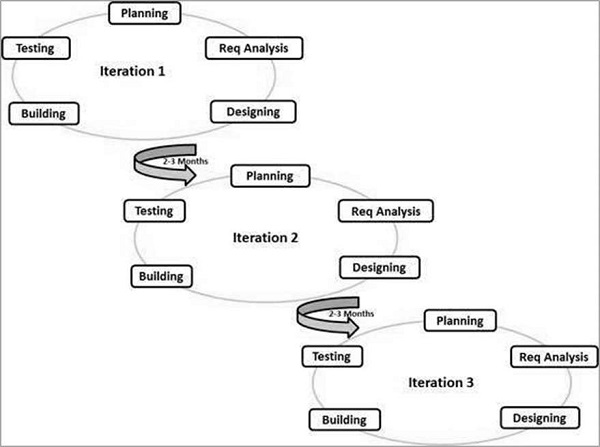
Agile uses an adaptive approach where there is no detailed planning and there is clarity on future tasks only in respect of what features need to be developed. There is feature driven development and the team adapts to the changing product requirements dynamically. The product is tested very frequently, through the release iterations, minimizing the risk of any major failures in future.
minimum documentation are the typical features of Agile development environment.
Iterative approach is taken and working software build is delivered after each iteration.Each build is incremental in terms of features; the final build holds all the features required by the customer.

Agile uses an adaptive approach where there is no detailed planning and there is clarity on future tasks only in respect of what features need to be developed. There is feature driven development and the team adapts to the changing product requirements dynamically. The product is tested very frequently, through the release iterations, minimizing the risk of any major failures in future.
minimum documentation are the typical features of Agile development environment.
The advantages of the Agile Model are as follows are;
- Is a very realistic approach to software development.
- Promotes teamwork and cross training.
- Functionality can be developed rapidly and demonstrated.
- Resource requirements are minimum.
- Suitable for fixed or changing requirements
- Delivers early partial working solutions.
- Good model for environments that change steadily.
- Minimal rules, documentation easily employed.
- Enables concurrent development and delivery within an overall planned context.
- Little or no planning required.
- Easy to manage.
- Gives flexibility to developers.
The disadvantages of the Agile Model are as follows are;
- Not suitable for handling complex dependencies.
- More risk of sustainability, maintainability and extensibility.
- An overall plan, an agile leader and agile PM practice is a must without which it will not work.
- Strict delivery management dictates the scope, functionality to be delivered, and adjustments to meet the deadlines.
- Depends heavily on customer interaction, so if customer is not clear, team can be driven in the wrong direction.
- There is a very high individual dependency, since there is minimum documentation generated.
- Transfer of technology to new team members may be quite challenging due to lack of documentation.
Reference: https://www.tutorialspoint.com/sdlc
